As Blue Badge Tourist Guides we often take our clients into the Tower of London as much as – or more than – any other building in London. With this in mind, it is important to develop a good relationship with those who live and work there. In the case of the Tower of London, these are the famous Yeoman Warders, commonly but unofficially known as ‘Beefeaters’. No-one knows for sure where the Beefeaters nickname comes from but people assumed that being the personal bodyguards of the monarch, they could enjoy a meat-rich diet and the name inevitably followed. The Yeoman Warders were established by Henry the Seventh in 1485 and today there are up to forty at any time, thirty-seven at present, including two women. Beefeaters at Tower of London are all retired members of the British armed services who have reached the rank of Regimental Sergeant Major, have a good conduct medal and given at least twenty two years’ service with an unblemished record.
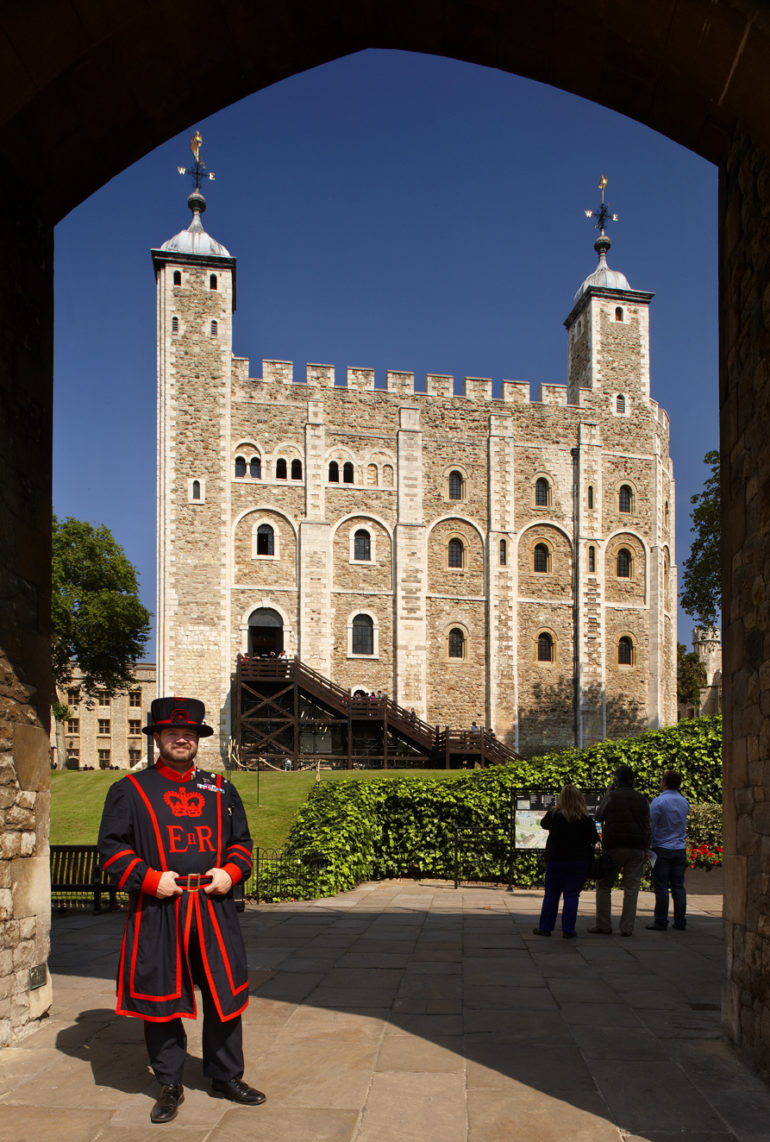 Tower of London – White Tower and Yeoman Warder Shedden. Photo credit: © Historic Royal Palaces.
Tower of London – White Tower and Yeoman Warder Shedden. Photo credit: © Historic Royal Palaces.
During a recent tour of Tower of London organized by Guide London to foster better relations between Blue Badge Tourist Guides and Beefeaters, John Donald who has been a Beefeater for 5 years indicated that he had achieved an unblemished record and good conduct medal in the British military as he had “never been caught.” This is actually an old Beefeaters joke which John shared as we adjourned to the Beefeater’s bar for drinks before going on to see the Ceremony of the Keys.
The Ceremony of the Keys has continued for over 600 years and involves both the serving soldiers who guard the Tower of London and the retired servicemen and women who live and work there. The Chief Yeoman Warder, accompanied by armed guards, brings the keys from the Byward Tower at the entrance to the Wakefield Tower where a sentry calls out “Halt, who comes there?” The Warder replies, “The keys.” The sentry asks “Whose keys?”, the reply is “Queen Elizabeth’s keys.” The sentry says, “Pass then, all’s well.” The keys and escort then proceed to the steps beside the White Tower where the last post is played and the Yeoman Warder calls out “God preserve Queen Elizabeth!” to which all present reply with a hearty “Amen!”
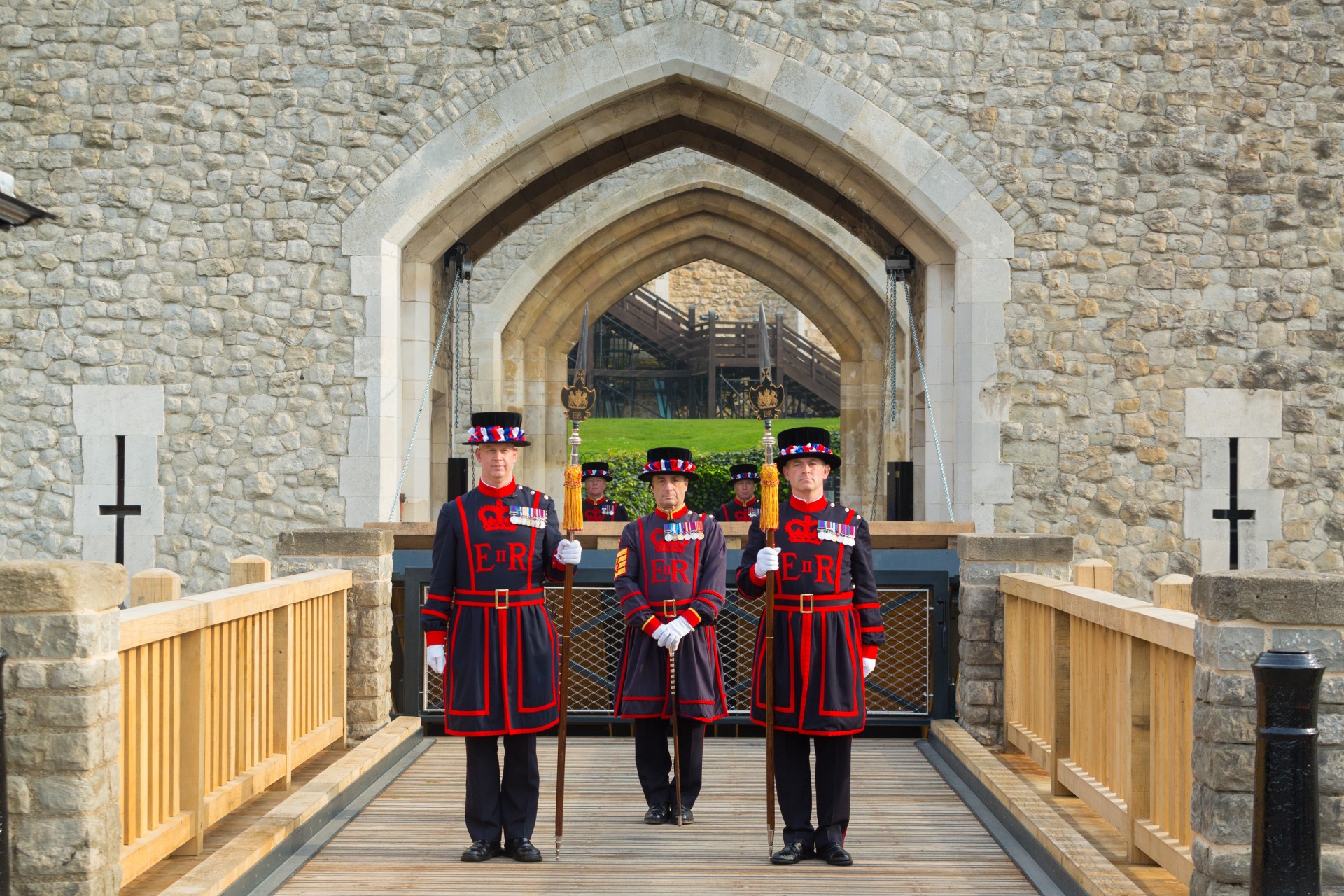 Yeoman Warders at the Tower of London on Wednesday 2nd April 2014 unveiled a working drawbridge, a site not seen for over a generation. Photo credit: © Historic Royal Palaces.
Yeoman Warders at the Tower of London on Wednesday 2nd April 2014 unveiled a working drawbridge, a site not seen for over a generation. Photo credit: © Historic Royal Palaces.
The Ceremony of the Keys has taken place every night (including Christmas) since it began in the middle ages. It has never been abandoned and has only been interrupted once, when the Tower of London was bombed by enemy action during the Second World War, causing a seven-minute delay, which was reported to the then monarch King George the Sixth. He accepted the apology given and said he hoped it would not happen again.
The current form of the Ceremony of the Keys dates from the time when the Duke of Wellington was Constable of the Tower of London. He was responsible for draining the moat around the Tower of London and replacing it with grass, which was itself covered with poppies in 2014 to represent and honour the dead of the First World War a hundred years it began. Draining the moat was reportedly done at the suggestion of Queen Victoria when she came to the Tower of London and was struck by the strong smell it gave out. The Duke also reformed the system of appointing Yeoman Warders by opening it up to all former soldiers, sailors, marines, and airmen later being granted the right to apply. Previously the position could be sold on by retiring Warders or passed on to their sons.

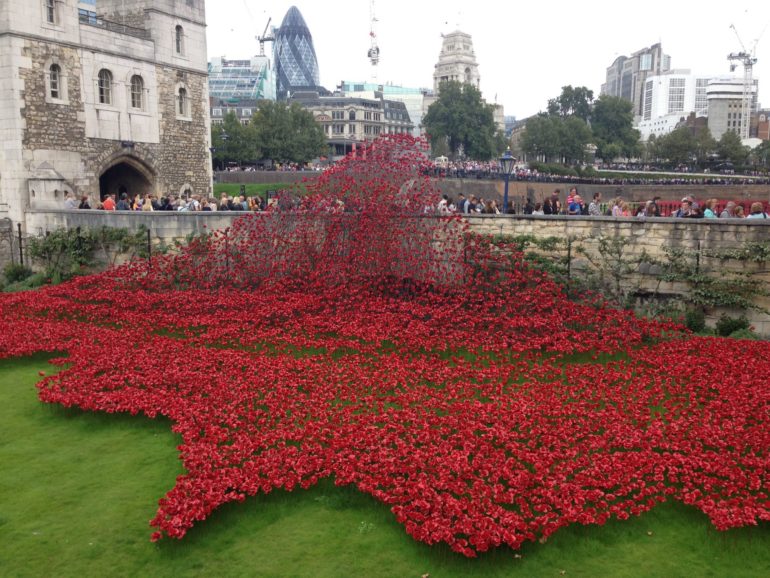 Tower of London – Ceramic red poppies installed for Blood Swept Lands & Sea of Red. Photo Credit: © Ursula Petula Barzey.
Tower of London – Ceramic red poppies installed for Blood Swept Lands & Sea of Red. Photo Credit: © Ursula Petula Barzey.
Nowadays all servicemen and women can apply for the position of Yeoman Warder at the Tower of London. Those selected live with their families in the Tower of London, cheerfully pose for photographs and conduct tours for visitors. Blue Badge Tourist Guides also take groups through the Tower of London so it is important to maintain good relations (you never bump into a Beefeater) and this visit was a good opportunity to do so.
For tickets to the Ceremony of the Keys, visit the Tower of London website. Please note that photography is strictly prohibited during the Ceremony.



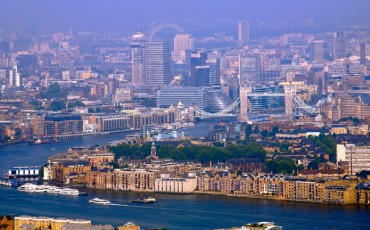
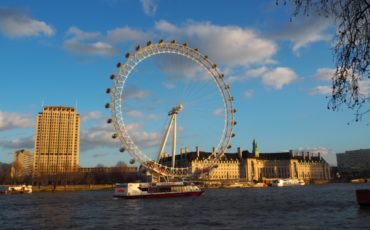


Leave a Reply